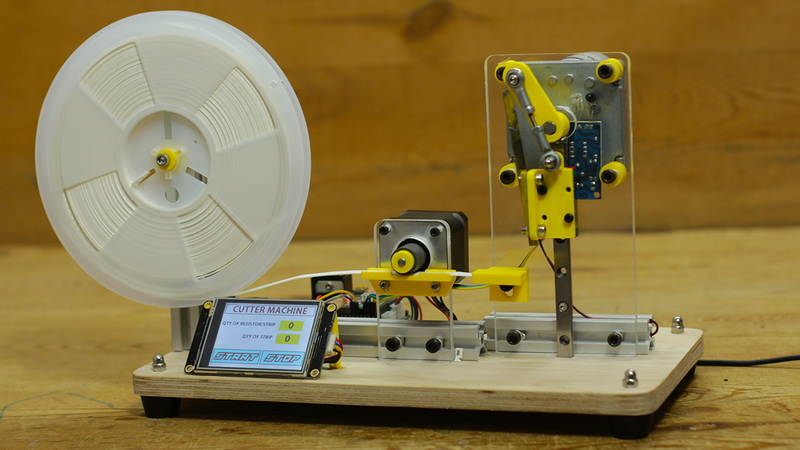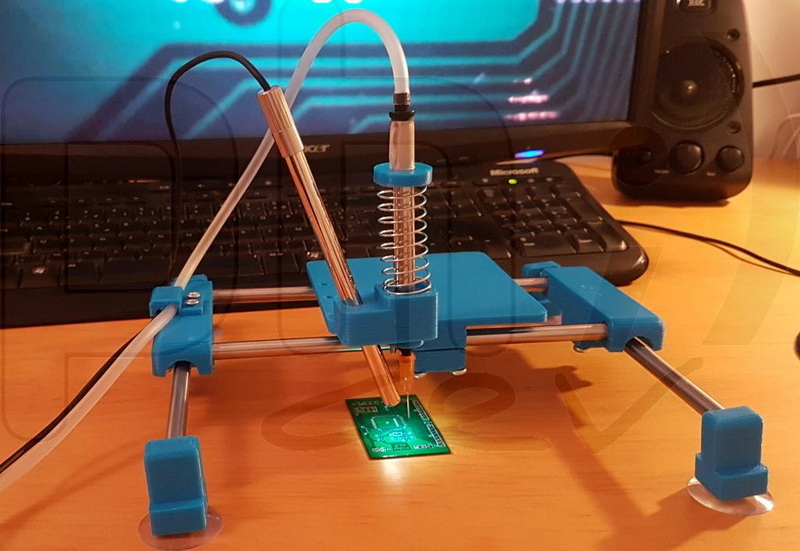Content Menu
● Introduction to SMD Soldering
>> Key Challenges in SMD Soldering
● Essential Tools for SMD Soldering
● Techniques for SMD Soldering with a Regular Soldering Iron
>> Step-by-Step Guide
>> Tips for Successful Soldering
● Common Mistakes in SMD Soldering
● Homemade SMD Soldering Machine Alternatives
>> Hot Air Rework Stations
>> DIY Reflow Ovens
● Advanced Techniques and Considerations
>> Using Solder Paste
>> Managing Static Electricity
>> Cleaning and Inspection
● Cost-Effectiveness of Homemade Solutions
● Troubleshooting Common Issues
● Conclusion
● FAQs
>> 1. What is the recommended temperature for soldering SMD components?
>> 2. Do I need a temperature-controlled soldering iron for SMD soldering?
>> 3. How do I prevent solder bridges when soldering SMD components?
>> 4. Can I use a hot air rework station for soldering SMD components?
>> 5. What are the benefits of using a homemade SMD soldering machine?
● Citations:
Soldering Surface Mount Devices (SMDs) can be challenging, especially when using a regular soldering iron. However, with the right techniques and tools, it is entirely possible to successfully solder SMD components without specialized equipment like a homemade SMD soldering machine or a hot air rework station. This article will guide you through the process, discussing the necessary tools, techniques, and considerations for achieving high-quality SMD soldering with a standard soldering iron.

Introduction to SMD Soldering
SMD components are tiny and are mounted directly onto the surface of a printed circuit board (PCB), unlike through-hole components that pass through the board. Due to their small size, SMDs require precise handling and soldering techniques to ensure reliable connections.
Key Challenges in SMD Soldering
1. Component Size: SMD components are very small, making them difficult to handle and solder.
2. Heat Control: SMDs are sensitive to excessive heat, which can damage them if not managed properly.
3. Precision: The small size of SMDs requires precise placement and soldering to avoid solder bridges or other defects.
Essential Tools for SMD Soldering
To solder SMD components effectively with a regular soldering iron, you'll need the following tools:
- Temperature-Controlled Soldering Iron: While not strictly necessary, a temperature-controlled iron helps maintain a consistent temperature, reducing the risk of overheating components. However, an unregulated iron can also be used with caution.
- Fine-Tip Soldering Iron Tip: A small tip allows for precise heat application, which is crucial for SMD components.
- Flux: Flux helps solder flow smoothly and reduces oxidation, making the soldering process easier.
- Tweezers: For handling and positioning SMD components.
- Magnification: A stereo microscope or magnifying glasses can be very helpful for inspecting and aligning components.
Techniques for SMD Soldering with a Regular Soldering Iron
Step-by-Step Guide
1. Prepare the PCB: Ensure the PCB is clean and free of oxidation. Apply a small amount of flux to the pads where the SMD components will be placed.
2. Position the Component: Use tweezers to place the SMD component onto its designated pads on the PCB. Align it carefully to ensure proper positioning.
3. Secure One End: Apply a small amount of solder to one pad and use the soldering iron to melt it, securing the component in place. This step is crucial for preventing the component from moving during soldering.
4. Solder the Remaining Pads: Once one end is secured, solder the remaining pads. Apply a small amount of solder to each pad and use the iron to melt it, ensuring the solder flows onto the component's legs.
5. Inspect and Test: After soldering all pads, inspect the joints under magnification to ensure they are clean and free of defects. Test the component to verify it functions correctly.
Tips for Successful Soldering
- Use the Right Solder: Choose a solder that melts at a suitable temperature for your components. Lead-free solder is commonly used but requires a slightly higher temperature than leaded solder.
- Work Quickly: Apply heat briefly to avoid overheating components. This is especially important with unregulated irons.
- Practice: Soldering SMD components requires practice. Start with larger components like 0805 or 1206 before moving to smaller sizes.
Common Mistakes in SMD Soldering
Understanding common mistakes can help improve your soldering skills. Some of the most frequent errors include:
- Using the Wrong Soldering Iron: Selecting an inappropriate iron can lead to poor solder joints and potentially damage components[2].
- Not Cleaning the Soldering Tip: A dirty tip can result in weak solder joints due to poor heat transfer[2].
- Using the Wrong Solder: Ensure the solder type matches your project's requirements to avoid weak joints[2].
- Not Heating Components Properly: Inadequate heating can lead to incomplete solder flow and weak joints[2].
- Applying Too Much Solder: Excessive solder can create solder bridges, causing short circuits[7].

Homemade SMD Soldering Machine Alternatives
While a homemade SMD soldering machine can be an interesting project, it may not be necessary for small-scale or hobbyist projects. Instead, you can use a regular soldering iron or explore other alternatives like hot air rework stations or DIY reflow ovens.
Hot Air Rework Stations
Hot air stations are useful for removing and reflowing SMD components. They provide controlled heat, making them ideal for delicate components. However, they can be more expensive than a basic soldering iron.
DIY Reflow Ovens
A DIY reflow oven can be built using a toaster oven and temperature control electronics. This setup is excellent for soldering multiple components at once but requires careful temperature management to avoid damaging components.
Advanced Techniques and Considerations
Using Solder Paste
For more complex projects or when soldering multiple components at once, using solder paste can be beneficial. Solder paste is applied to the PCB pads before placing the components, and then the assembly is heated in a reflow oven or with a hot air gun to melt the solder.
Managing Static Electricity
Static electricity can damage sensitive electronic components. Use an anti-static wrist strap or mat to protect your components during handling.
Cleaning and Inspection
After soldering, clean the PCB to remove any flux residue. Use a magnifying glass or microscope to inspect the solder joints for defects.
Cost-Effectiveness of Homemade Solutions
Building a homemade SMD soldering machine or using DIY alternatives can be cost-effective for frequent use or large projects. However, for occasional or small-scale projects, purchasing specialized tools might be more practical.
Troubleshooting Common Issues
- Tombstoning: This occurs when one end of the component lifts off the PCB during soldering. To prevent this, ensure both ends are soldered evenly and quickly[3].
- Solder Bridges: These are unwanted connections between components. Use a fine-tip iron and apply solder precisely to avoid bridges[7].
Conclusion
Soldering SMD components with a regular soldering iron is feasible with the right techniques and tools. While temperature control and precision are crucial, a well-practiced hobbyist can achieve high-quality results without investing in specialized equipment like a homemade SMD soldering machine. For those interested in more efficient or large-scale SMD soldering, alternatives like hot air stations or DIY reflow ovens are worth exploring.

FAQs
1. What is the recommended temperature for soldering SMD components?
The recommended temperature for soldering SMD components typically ranges from 350°C to 380°C, depending on the type of solder used. Lead-free solder requires a slightly higher temperature than leaded solder.
2. Do I need a temperature-controlled soldering iron for SMD soldering?
While a temperature-controlled soldering iron is beneficial for maintaining consistent heat and preventing overheating, it is not strictly necessary. An unregulated iron can be used with caution and quick soldering techniques.
3. How do I prevent solder bridges when soldering SMD components?
To prevent solder bridges, apply a minimal amount of solder to each pad and ensure the component is properly aligned. Use flux to help solder flow smoothly and avoid excess solder.
4. Can I use a hot air rework station for soldering SMD components?
Yes, a hot air rework station can be used for soldering SMD components. It is particularly useful for removing and reflowing components but may not be necessary for simple soldering tasks.
5. What are the benefits of using a homemade SMD soldering machine?
A homemade SMD soldering machine can provide controlled heat and efficiency for soldering multiple components at once. However, building one may require significant time and resources, and it might not be cost-effective for small projects.
Citations:
[1] https://www.youtube.com/watch?v=fYInlAmPnGo
[2] https://kunkune.co.uk/soldering/common-mistakes-in-soldering-and-how-to-avoid-them/
[3] https://www.reddit.com/r/AskElectronics/comments/k3gw1z/advice_needed_surface_mount_soldering_with_an_iron/
[4] https://www.instructables.com/How-to-Solder-SMD-SMT-Components-With-a-Soldering-/
[5] https://www.instructables.com/Soldering-tiny-SMD-components-the-easy-and-fast-wa/
[6] https://learn.sparkfun.com/tutorials/how-to-solder-through-hole-soldering/all
[7] https://electronicsgroup.co.uk/common-soldering-mistakes/
[8] https://www.youtube.com/watch?v=tSRLDsQgBok
[9] https://www.youtube.com/watch?v=CORLzDxDV4w
[10] https://www.instructables.com/A-Complete-Beginners-Guide-to-SMD-Soldering/
[11] https://www.youtube.com/watch?v=1WX3gESj184
[12] https://www.protoexpress.com/blog/common-errors-surface-mount-technology-smt/
[13] https://www.youtube.com/watch?v=ULuXnqW3PNk
[14] https://www.reddit.com/r/AskElectronics/comments/p60mps/looking_for_a_guide_to_diy_smd_soldering/
[15] https://electronics.stackexchange.com/questions/535678/resistors-proper-smd-package-for-newbie
[16] https://www.youtube.com/watch?v=EW9Y8rDm4kE
[17] https://www.eptac.com/blog/5-common-solder-mistakes-and-how-to-resolve-them
[18] https://budgetlightforum.com/t/soldering-iron-tips-how-to-solder-smd-without-ruining-the-pcb/59061
[19] https://www.youtube.com/watch?v=MheXNMcNuwQ
[20] https://www.youtube.com/watch?v=nyaN2ZhElHA




















